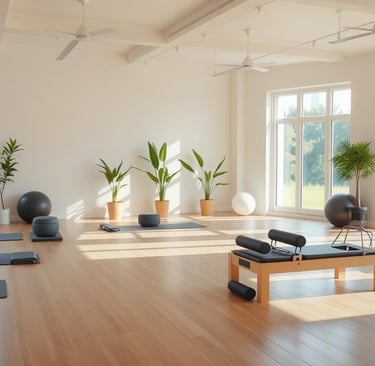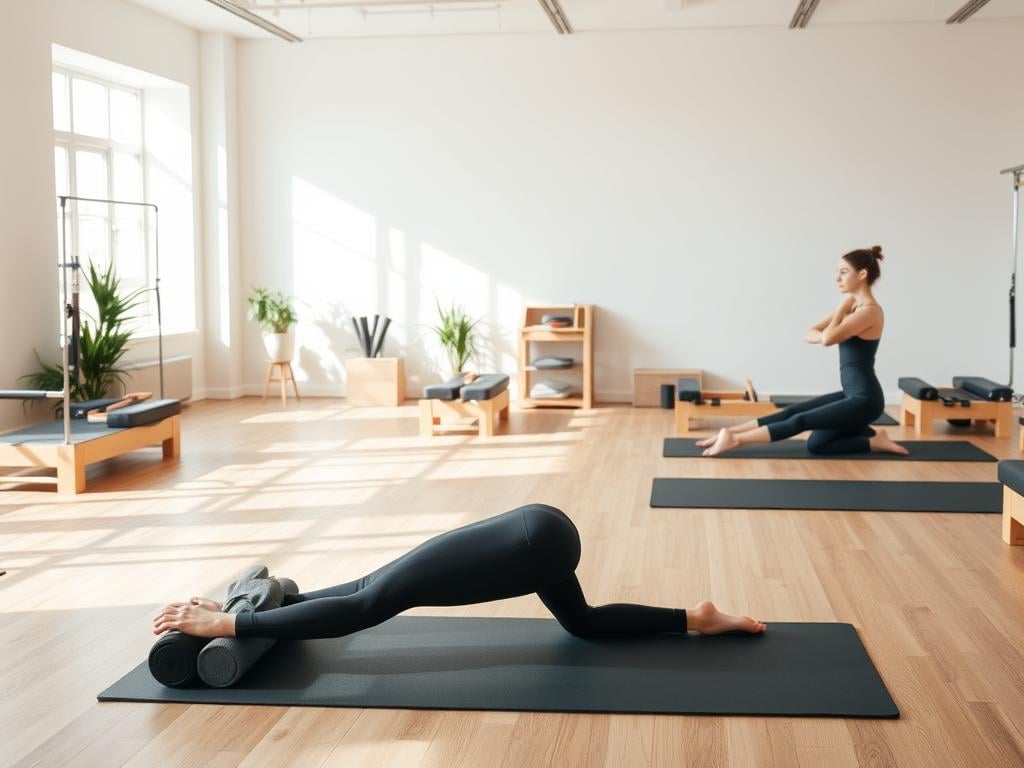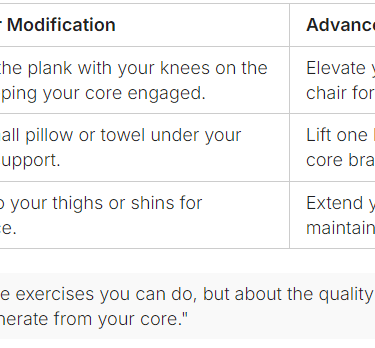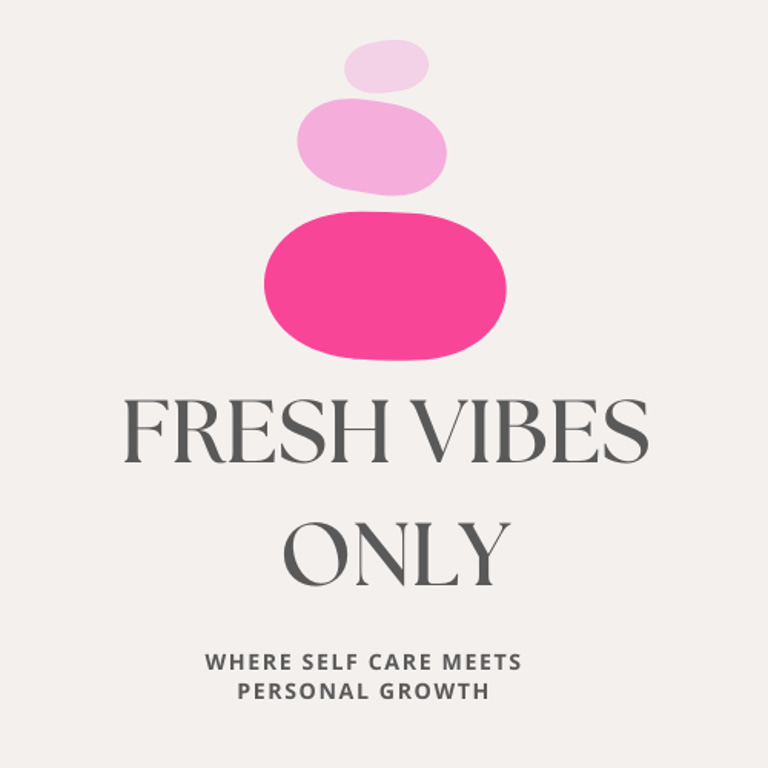Beginners Pilates Workout
Blog post description. Pilates is a low-impact exercise method that focuses on core strength, flexibility, and body awareness. Perfect for newcomers, our blog breaks down essential concepts and offers easy-to-follow routines that anyone can incorporate into their daily life. Each post features beginner-friendly exercises, complete with detailed instructions and modifications to suit all fitness levels. We’ll explore the foundational principles of Pilates, including breath control, alignment, and concentration, to help you cultivate a strong mind-body connection. Whether you're looking to improve posture, enhance athletic performance, or simply find a new way to move, our workouts will empower you to reach your goals.
Calen Rey
10/2/20247 min read
My post content
This post may contain affiliate links for which
I may receive a commission from purchases
made through the links
Pilates is a popular exercise system that's easy on the body but still effective. It's great for those who want to improve their fitness and feel better overall. This beginner pilates workout is perfect for anyone new to exercise or looking to add to their routine.


The pilates for beginners routine here teaches the basics of Pilates. It includes controlled movements, proper form, and breathing. Learning these basics will not only boost your physical health but also help you connect your mind and body better. This can lead to better posture, balance, and overall well-being.
Key Takeaways
Pilates is a versatile exercise system that improves overall fitness and well-being.
Beginner Pilates offers a gentle and accessible entry point for those new to the practice.
The Pilates for beginners workout focuses on core principles, including controlled movements, proper form, and mindful breathing.
Mastering the fundamentals of Pilates can lead to improved posture, balance, and overall well-being.
This beginner Pilates workout is the perfect starting point for those looking to explore the benefits of Pilates.
What is Pilates?
Pilates is a workout that boosts strength, flexibility, and health. It was created by Joseph Pilates in the early 1900s. It focuses on proper form, posture, and connecting the mind and body.
Essential Equipment for Beginners
Building your pilates equipment list? Here are the must-haves:
Yoga Mat: A good yoga mat gives you a stable, non-slip place to practice. It helps you keep the right form and balance.
Resistance Bands: These bands come in different strengths. They add challenge to your Pilates, focusing on specific muscles.
Stability Ball: Known as a Swiss ball, it boosts core strength, balance, and posture. You use it to keep stable during exercises.
Foam Roller: Use it for self-myofascial release. It eases muscle tension and soreness, and boosts mobility and flexibility.
Pilates Ring: Also called a magic circle, it adds resistance to Pilates exercises. It works on arms, legs, and core.
When starting pilates, focus on form and technique, not just the equipment. The right tools can improve your practice. But Pilates is really about connecting your mind and body, and paying attention to detail.
Core Principles of Pilates
The Pilates method is based on key principles:
Concentration: It's all about focusing on each movement and being fully present.
Control: Every exercise is done with precise control to engage muscles efficiently.
Centering: The core, or "powerhouse," is the focus, including the abdominal, back, and hip muscles.
Precision: Movements are done with great attention to detail, focusing on proper form and technique.
Breath: Controlled breathing is key, enhancing the mind-body connection and exercise effectiveness.
Flowing Movement: Exercises are done smoothly, with a focus on smooth transitions.
Benefits of Pilates for Beginners
Pilates offers many benefits for beginners, including:
Improved Strength and Flexibility: It builds strength in the core, arms, and legs, and improves flexibility.
Enhanced Balance and Posture: It improves balance and posture, boosting overall physical health.
Reduced Risk of Injury: Controlled movements and proper technique reduce injury risk.
Stress Reduction: The focus on breathing and mind-body connection helps reduce stress and promotes relaxation.
Increased Body Awareness: It makes you more aware of your body and its movements, leading to better control.


Getting Started with Pilates
Starting your pilates for beginners journey is exciting and can change you. To get the most from your practice, you need the right beginner pilates equipment. We'll look at the key tools to help you begin pilates and grow.
With these key Pilates equipment, you're set for a rewarding Pilates journey. Enjoy the transformation, listen to your body, and discover the many benefits of Pilates.
Beginners Pilates Workout
Pilates is great for beginners wanting to boost strength, flexibility, and health. This workout is full of easy exercises that focus on the core, build strength, and improve movement. It's perfect for anyone new to pilates or looking to start again.
Begin your beginner pilates workout with a warm-up. Do some light stretching to get your muscles ready. Then, try these simple pilates exercises:
Pelvic Tilts: Lie on your back with knees bent and feet flat. Tilt your pelvis, pressing your lower back into the mat, then release. Do this 10-15 times.
Pilates Breathing: Sit up straight, with one hand on your belly and the other on your chest. Breathe in deeply through your nose, then exhale slowly through your mouth. Do this 5-10 times.
Shoulder Taps: Start in a plank position, with your core engaged. Tap your right hand to your left shoulder, then your left hand to your right shoulder. Do this 10-12 times.
Leg Circles: Lie on your back with one leg extended and the other bent. Circle your extended leg in one direction, then the other, 5-10 times per side.
End your pilates workout for beginners with a cool-down. Focus on your breathing and let your body relax. Always listen to your body and adjust the exercises to keep them safe and comfortable.


Adding this easy pilates routine to your routine will bring many benefits. You'll see better core strength, more flexibility, and overall well-being. Keep practicing, and you'll master pilates exercises for beginners in no time.
Safety Tips for Beginners
Pilates is a great way to stay fit and feel good. But, it's important to be safe, especially if you're new. Here are some easy tips to keep you safe and happy while doing Pilates.
Proper Form and Alignment
Getting the right form is key in Pilates. Bad technique can hurt you and make it less effective. A good Pilates teacher can help you learn the right way to do each move.
Keep your posture right and use your core in every move.
Don't lock your joints and move smoothly from one exercise to the next.
Remember to breathe well and keep your breath steady.
Listening to Your Body
Pilates is all about listening to your body and acting on it. If you feel pain or discomfort, stop right away and talk to your teacher. It's vital to listen to your body and adjust as needed.
Begin with easier exercises and slowly add more intensity as you get stronger.
Don't try to do too much too soon, as it can cause injuries.
Be kind to yourself and celebrate every small victory.
By following these pilates safety tips, proper pilates form, and listening to your body pilates tips, you'll have a safe and rewarding Pilates journey as a beginner.


Modifying Exercises for Your Level
Starting with Pilates means making exercises fit your fitness level. By adjusting pilates exercises for beginners, you build strength and confidence. This makes your practice more rewarding and sustainable.
Here are some tips for modifying pilates exercises to suit your individual needs:
Adjust the range of motion: If an exercise is too hard, try doing less of it. This helps you focus on form and muscle use without getting too tired.
Use props for support: Use tools like resistance bands or pilates modifications to help with balance. This is especially helpful for harder exercises.
Opt for easier variations: Look for simpler versions of Pilates exercises. These versions are less intense but still work the same muscles.
Listen to your body: If you feel pain or discomfort, adjust or skip the exercise. It's important to listen to your body for a safe Pilates practice.
By customizing your Pilates workout, you'll enjoy it more and see better results. This approach helps you enjoy Pilates for a long time.


Conclusion
In this guide, we've looked at the basics and benefits of Pilates. It's a practice that can make your core stronger, improve your posture, and enhance your well-being. If you're new to fitness or want to mix up your routine, Pilates is a great choice.
As you start or continue with Pilates, always listen to your body. Make sure to do the movements right and slowly get better. With regular practice and patience, you'll see how Pilates can change your body and mind. It's all about connecting your mind and body through Pilates.
Adding pilates for beginners, beginner pilates, and pilates benefits to your workouts opens up new possibilities. It's a chance to get stronger, stretch, and move with awareness. So, start this journey and let Pilates help you become a healthier, more balanced version of yourself.
FAQ
What is Pilates and how does it differ from other forms of exercise?
Pilates is a workout that focuses on strength, flexibility, and balance. It uses controlled movements and proper form. Unlike other exercises, Pilates connects the mind and body, emphasizing core stability and muscle control.
What are the core principles of Pilates?
Pilates is based on several key principles. These include concentration, control, centering, flow, precision, and breathing. These help practitioners engage their muscles and move with control and purpose.
What are the benefits of Pilates for beginners?
Pilates is great for beginners. It improves flexibility, posture, and core strength. It also boosts balance, coordination, and reduces stress and anxiety. It's a low-impact exercise that can be adjusted for different fitness levels.
What essential equipment do I need to get started with Pilates?
To start Pilates, you'll need a few basic tools. A yoga mat, resistance bands, and a stability ball are essential. These help you maintain form, challenge muscles, and enhance your workouts.
How can I ensure proper form and alignment in my Pilates exercises?
Maintaining proper form and alignment is key in Pilates. Focus on your posture, engage your core, and move with precision. If unsure, consider a qualified instructor to teach you the right techniques.
How can I modify Pilates exercises to suit my fitness level?
You can adjust Pilates exercises to fit your fitness level. Change the range of motion, use props, or try variations. Listen to your body and modify as needed to avoid injury and get the most out of your workouts.
